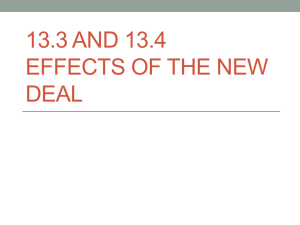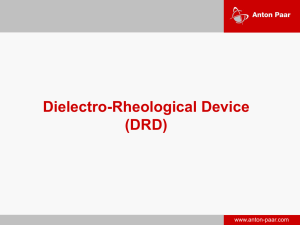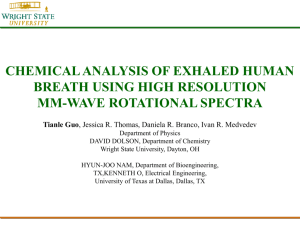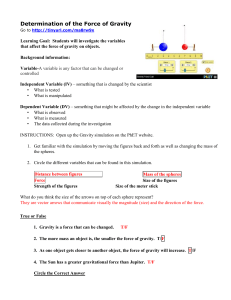Dr Michiel Luteijn
advertisement
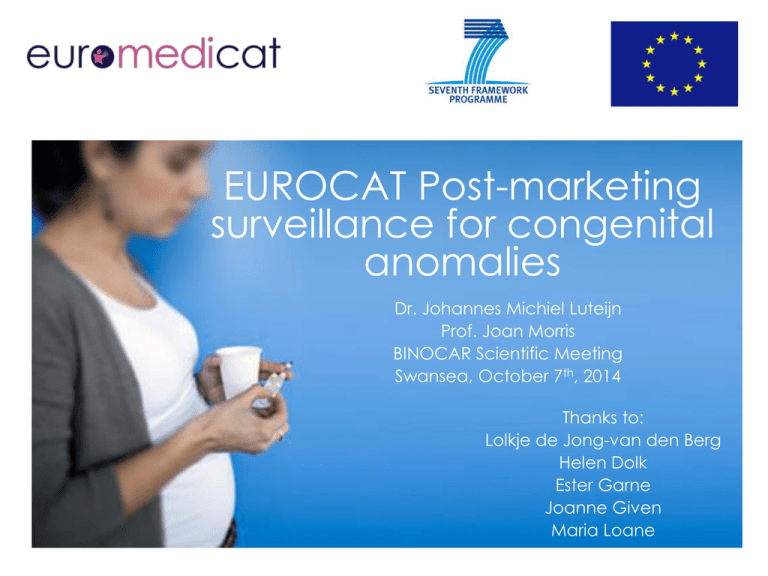
EUROCAT Post-marketing surveillance for congenital anomalies Dr. Johannes Michiel Luteijn Prof. Joan Morris BINOCAR Scientific Meeting Swansea, October 7th, 2014 Thanks to: Lolkje de Jong-van den Berg Helen Dolk Ester Garne Joanne Given Maria Loane Drug use in pregnancy Two studies estimated 57-79% of pregnant women in Northern Europe are exposed to prescription drugs during pregnancy.1,2 Little is known about the safety of drugs in pregnancy, partly due to pregnant women not being involved in pre-marketing studies. 1 Bakker, M. K., Jentink, J., Vroom, F., Van Den Berg, P. B., De Walle, H. E., & De Jong-Van Den Berg, L. T. (2006). Drug prescription patterns before, during and after pregnancy for chronic, occasional and pregnancy-related drugs in the netherlands. BJOG : An International Journal of Obstetrics and Gynaecology, 113(5), 559-568 2 Engeland, A., Bramness, J. G., Daltveit, A. K., Ronning, M., Skurtveit, S., & Furu, K. (2008). Prescription drug use among fathers and mothers before and during pregnancy. A population-based cohort study of 106,000 pregnancies in norway 2004-2006. British Journal of Clinical Pharmacology, 65(5), 653-660 EUROmediCAT signal detection Aim: To develop a method of signal detection to be used as a routine analysis tool. Dataset 15 EUROCAT registries in EUROmediCAT Births from 1995-2011 14,950 registrations of congenital anomaly with at least a single exposure to a drug (ATC-code 5-digit+) Folic acid, minerals and vitamins not included as exposures Exclusions Anomalies with 1-4 digit ATC-code exposures only (n=1,288) Anomalies with no clear 1st trimester exposure (n=13,377) Infants with a chromosomal anomaly Dataset Drug exposure 5- and 7-digit ATC codes (n = 272, n = 505) Exposure collected mainly prospective to birth by healthcare professionals. Cases EUROCAT coding committee identified 59 subgroups of nonchromosomal congenital anomaly Potential drug-congenital anomaly signals must have at least 3 exposed cases 3 Teratogenic mechanisms of medical drugs. Van Gelder MM, van Rooij IA, Miller RK, Zielhuis GA, de Jong-van den Berg LTW, Roeleveld N. Hum Reprod. Update. 2010 Jul-Aug;16(4):378-94 Analysis of drug-CA combinations Analysis by Fishers’ exact test Drug A All other drugs excluding A Anomaly a b All other anomalies c d A total of 59 congenital anomalies x 836 drug-codes. 49,324 analyses performed. 19,529 5-digit ATC-code analyses 29,795 7-digit ATC-code analyses Fisher’s exact results for 7-digit ATC – anomaly combinations 1.00e-10 1.00e-09 1.00e-08 1.00e-07 p 1.00e-06 .00001 P-value .0001 .001 .01 0.05 .05 .1 1 0.01 0.1 0.2 1 5 10 Observed ORRatio Observed Odds 100 Multiple testing issues P Values Given there is no association - P = probability observed or more extreme result would occur P = 0.05 means that 5% of Fisher’s exact tests where there is no association will be “statistically significant” Ie 5% of 5,000 tests are likely to be false positives False Discovery Rate: Proportion of significant results that are expected to be false positives FDR of 5% means 5% of the “significant” results are likely to be false positives Ie 5% of significant results are likely to be false positives False Discovery Rate Density Distribution of test statistics if there are no associations B Possible test results (Z-score) False Discovery Rate 𝐻𝑒𝑖𝑔ℎ𝑡 𝑏𝑙𝑎𝑐𝑘 𝑐𝑢𝑟𝑣𝑒 𝐻𝑒𝑖𝑔ℎ𝑡 𝑟𝑒𝑑 𝑐𝑢𝑟𝑣𝑒 = 𝑩/𝑨 Distribution of test statistics if there are no associations Density FDR = Observed distribution of test statistics A B Possible test results (Z-score) False Discovery Rate 1.00e-10 1.00e-09 1.00e-08 1.00e-07 p 1.00e-06 .00001 FDR = 5% .0001 P-value .001 .01 0.05 .05 .1 0.05 1 0.01 0.1 0.2 1 5 10 Observed OR Observed Odds Ratio 100 False Discovery Rate 1.00e-10 May exclude true associations 1.00e-09 1.00e-08 1.00e-07 p 1.00e-06 .00001 FDR = 5% .0001 P-value .001 .01 0.05 .05 .1 0.05 1 0.01 0.1 0.2 1 5 10 Observed OR Observed Odds Ratio 100 False Discovery Rate 1.00e-10 May exclude true associations 1.00e-09 1.00e-08 1.00e-07 p 1.00e-06 .00001 FDR = 5% .0001 P-value FDR = 50% .001 .01 0.05 .05 .1 1 0.01 0.1 0.2 1 5 10 Observed OR Observed Odds Ratio 100 False Discovery Rate 1.00e-10 May exclude true associations 1.00e-09 1.00e-08 1.00e-07 p 1.00e-06 .00001 FDR = 5% .0001 P-value FDR = 50% .001 May include .05 too many false associations .01 0.05 .1 1 0.01 0.1 0.2 1 5 10 Observed OR Observed Odds Ratio 100 Flowchart of analyses 49,324 drug-CA combinations 19,529 5-digit drug combinations (including aggregate drug groups) 29,795 7-digit drug combinations Multiple testing procedure (649 p-value < 0.05) Multiple testing procedure (886 p-value < 0.05) 97 potential signals at (FDR= 0.5 ; p < 0.003) 31 potential signals at (FDR = 0.5 ; p < 0.0005) 128 potential signals Preliminary Results – Association tree Example – Spina bifida and N03AG01 (valproic acid) Congenital Anomaly Neural Tube Defects Spina Bifida Exposure Neural Tube Defects Spina Bifida Odds Ratio N03AG Exposed Cases 30 4.1 (2.6 - 6.0) N03AG 29 7.4 (4.7 - 11.2) N03AG01 29 4.0 (2.6 - 6.0) N03AG01 28 7.3 (4.6 - 11.0) Cases not yet verified by registry Flowchart of analyses 49,324 drug-CA combinations Exclusions 47,789 FDR > 0.5 128 potential signals 13 Less than 3 exposed cases 115 potential signals 20 5-digit ATC code of 7-digit ATC associated with the same CA 6 Aggregate CA of a more specific CA associated with the same exposure 12 Protective associations 77 Independent signals Subject to detailed follow-up Validation of methodology Spina bifida and valproic acid † OR 7.25 (4.61-11.02) 28 Exposed cases Congenital heart defects and human insulin † OR 2.46 (1.81-3.35) 102 Exposed cases † Cases not yet verified by registry Future work The WHO-Uppsala Monitoring Centre receives reports of adverse drug reactions from all over the world. 66,000 reports of CA-related adverse drug reactions since 2000 70% American/Canadian Valuable independent dataset for testing signals



